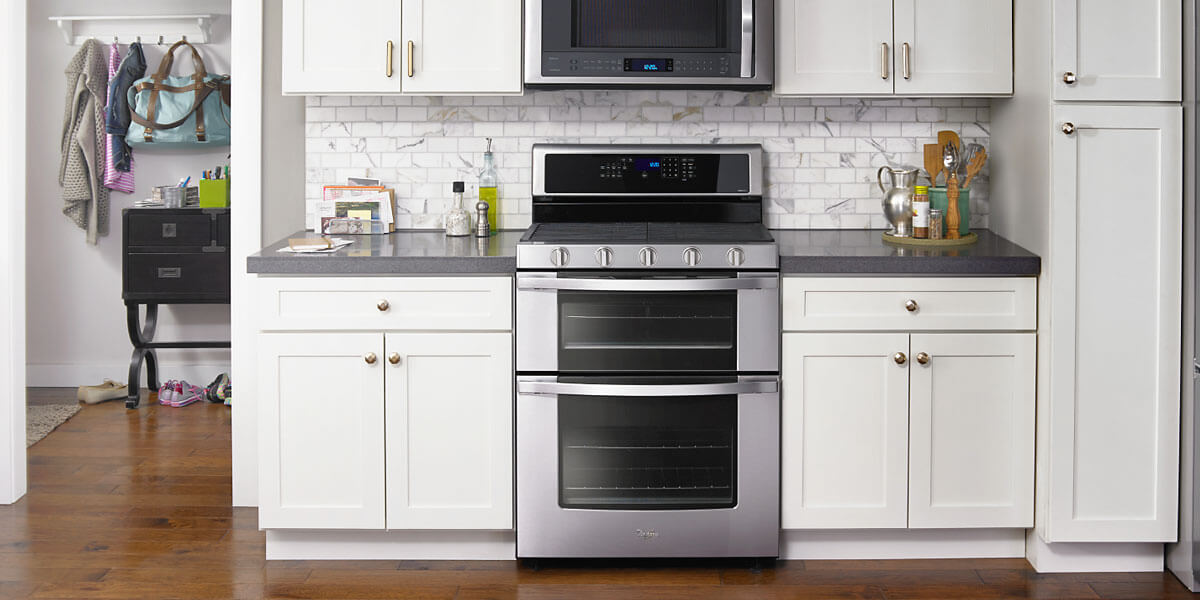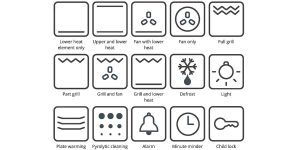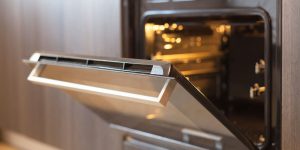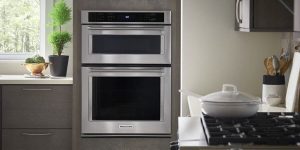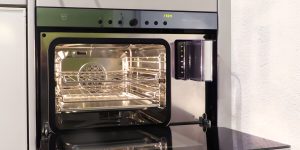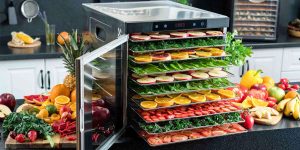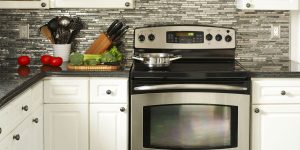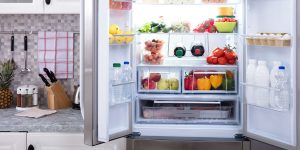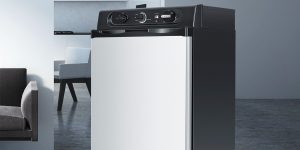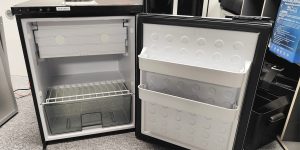Choosing the right oven plays a critical role in the culinary journey. There are numerous types of ovens, each with unique features and capabilities. Cooking efficiency can vary significantly based on the type of oven: some ovens might cook food more quickly, while others take longer but better preserve the taste and aroma. Moreover, selecting the right oven can assist you in achieving desired cooking results, enhancing the flavor and texture of your dishes. This is why understanding the intricacies of each type of oven is so important.
Configuration-based ovens
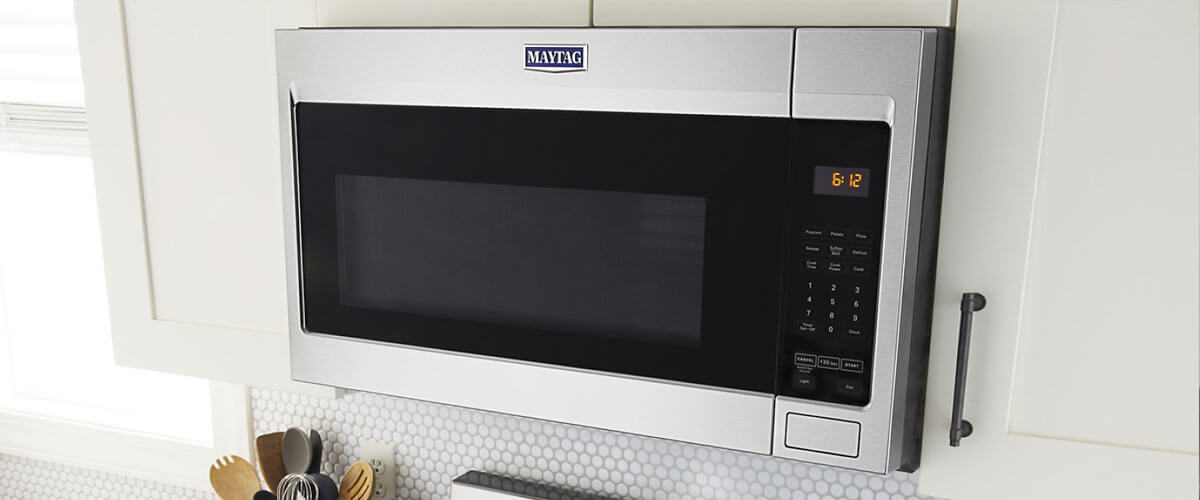
Based on my experience, I can assure you that different kinds of ovens cater to various needs and preferences in the kitchen. When choosing an oven, it’s important to consider the configuration – its size, style, and design. Here’s a look at some of the common oven configurations:
| Oven configuration | Description | Advantages | Disadvantages |
|---|---|---|---|
| Freestanding ranges | Standalone units combining a cooktop and an oven. |
|
|
| Wall ovens | Built into kitchen cabinetry, excluding the cooktop. Available in single or double-oven variations. |
|
|
| Combination wall ovens | Integrate microwave and convection oven functions. |
|
|
| Countertop ovens | Compact ovens placed on the countertop. |
|
|
Heating style-based ovens
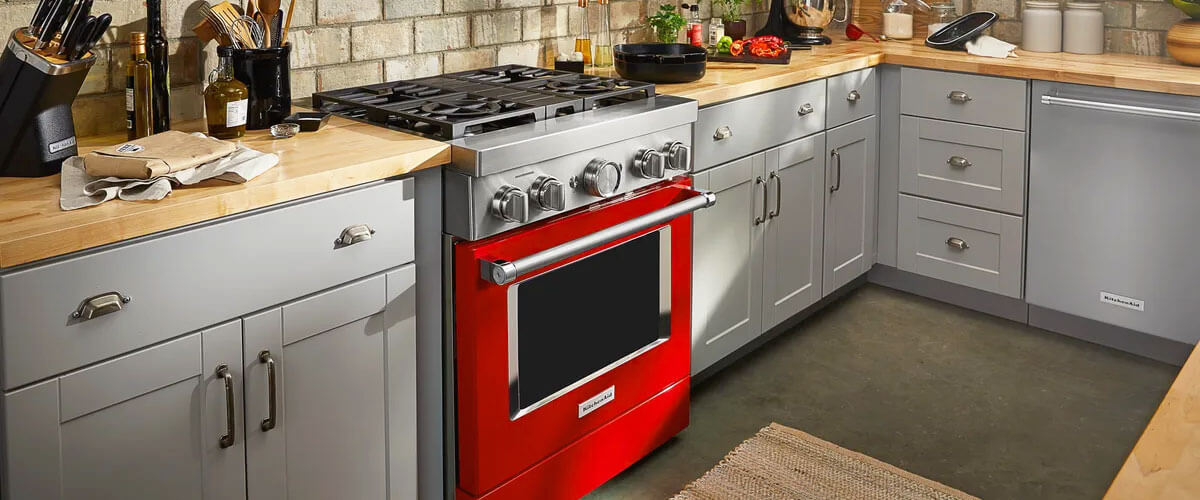
When it comes to cooking, the heating method utilized by the oven can make a significant difference in the outcome of the dish. Different heating styles cater to various culinary needs and can affect the taste, texture, and appearance of the food.
Conventional ovens
Conventional ovens, also known as traditional, thermal, or radiant ovens, can be either gas or electric. They come in various sizes, styles, and designs. The primary heating method in these ovens comes from heating elements, either gas burners or electric coils, located at the top and bottom of the oven chamber.
Advantages of conventional ovens:
- Uniform heating: Conventional ovens often provide even and consistent heating, ensuring that the food is cooked uniformly.
- Versatility: They are versatile and can handle a variety of cooking tasks, including baking, roasting, and broiling.
- User-friendly: Known for their simplicity, conventional ovens are straightforward to use, often with minimal controls and settings.
Disadvantages of conventional ovens:
- Hot spots: Due to their radiant heat, they might have some hot spots, meaning some areas can cook faster than others.
- Limited advanced features: Conventional ovens typically don’t come with advanced features or settings found in more modern ovens.
Convection ovens
Convection ovens stand out with advanced technology, marked by a fan that circulates hot air inside the oven chamber. This unique feature results in faster and more even cooking.
Advantages of convection ovens:
- Even cooking: The circulating air ensures that there are no hot spots, leading to more consistent and evenly cooked dishes.
- Faster cooking: Thanks to the fan-assisted circulation, cooking times can be reduced, which also means energy savings in the long run.
Disadvantages of convection ovens:
- Adjustment time: For those accustomed to conventional ovens, there might be a learning curve to understand the reduced cooking times and temperature adjustments.
- Price: Generally, convection ovens can be more expensive than their conventional counterparts due to the advanced technology.
Microwave ovens
Microwave ovens, or simply microwaves, operate in a fundamentally different manner than conventional and convection ovens. They utilize microwaves, a form of electromagnetic radiation, to excite the water molecules within food.
Advantages of microwave ovens:
- Speed: Microwaves are known for their swift cooking times, making them perfect for those on the go.
- Efficiency: Consumes less energy compared to traditional ovens, particularly for shorter cooking durations.
Disadvantages of microwave ovens:
- Uneven Cooking: Sometimes, microwaves can heat food unevenly, leading to hot spots.
- Texture: They may not provide the crispy exterior that conventional or convection ovens can, making them less suitable for certain dishes like roasts or pies.
Steam ovens
Steam ovens, as the name suggests, utilize steam to cook food. Equipped with a water reservoir, the water is heated until it transforms into steam, which then circulates within the oven chamber, ensuring a gentle and even cooking process.
Advantages of steam ovens:
- Nutrient retention: Cooking with steam preserves more vitamins and minerals than traditional cooking methods.
- Moisture maintenance: Foods remain moist, reducing the risk of drying out – ideal for delicate dishes.
Disadvantages of steam ovens:
- Lack of browning: Unlike conventional ovens, steam ovens won’t brown or crisp up the surface of dishes.
- Price: Typically, steam ovens can be more expensive than conventional ovens.
Fuel type ovens
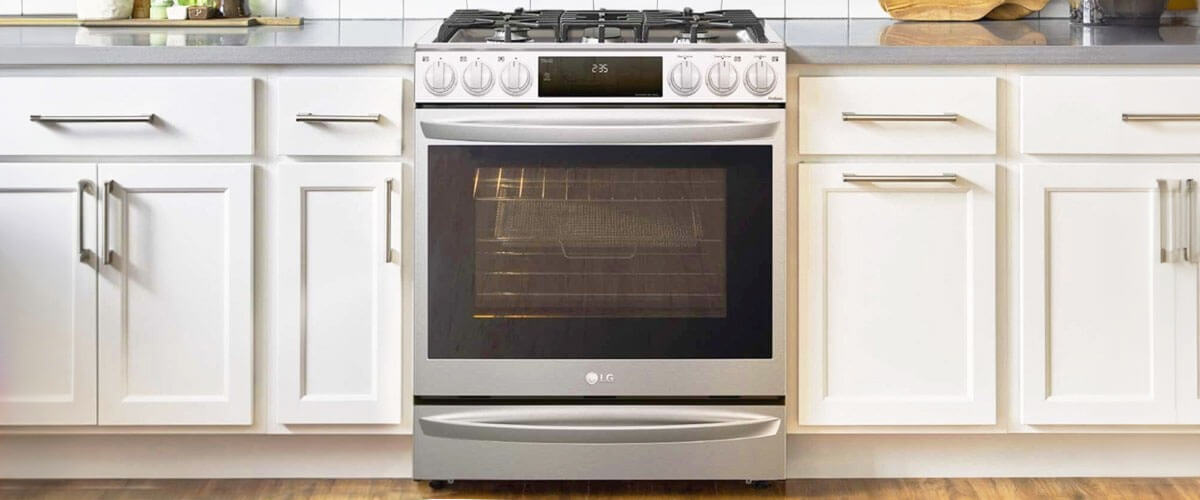
Gas ovens employ a gas burner situated at the bottom of the chamber. When ignited, the burner creates a flame that heats the oven, with the warmth from the flame uniformly cooking the food. These models provide precise temperature control and a rapid heating period.
Electric ovens, in contrast, contain heating elements typically located at the top and bottom of the chamber. Upon activation, these elements radiate heat throughout the oven, ensuring even food preparation. Electric ovens distribute heat uniformly, resulting in evenly-cooked food.
In summation, while gas ovens offer precise temperature control and the benefit of visually gauging the flame, electric ovens champion uniform heat distribution and additional features like convection. The choice between gas and electric ovens often boils down to personal preference, existing kitchen equipment, and the availability of gas or electric utilities.
Ovens with special functions
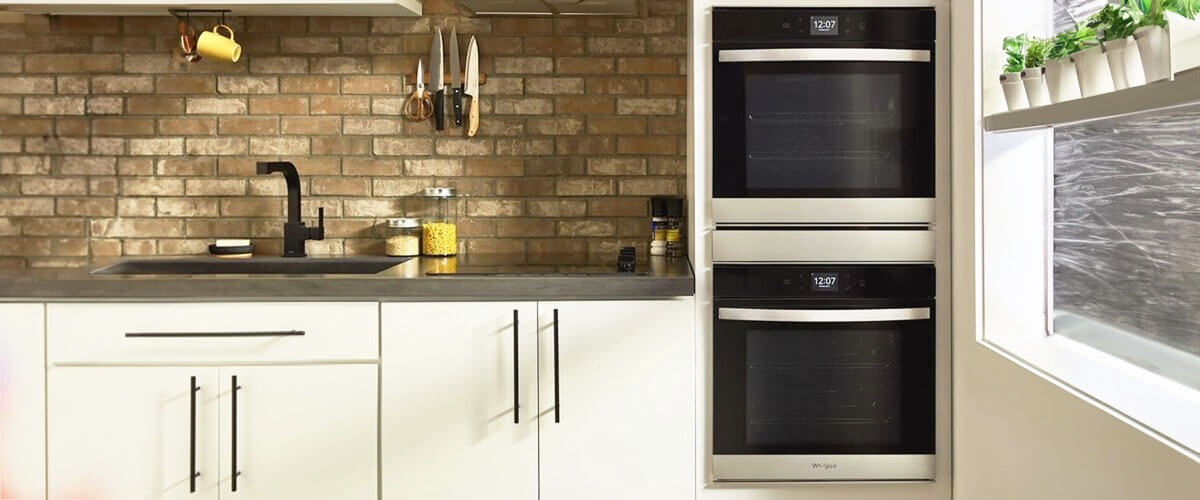
In the modern kitchen, ovens have become far more advanced than the simple heating boxes of yesteryears. They now come with a variety of specialized functions that can improve your cooking experience and outcomes. Here’s a detailed look into these innovations:
- Combination microwave and convection ovens:
- Features:
- Combine microwave and convection oven functions.
- Microwave for quick heating, convection for baking, roasting, and broiling.
- Both functions can be used separately or together.
- Advantages:
- Versatility in food preparation.
- Quick heat or defrost with the microwave function.
- Achieve a crispy and evenly baked finish with the convection feature.
- Features:
- Single, double, or combination ranges and wall ovens:
- Features:
- Single ovens have one chamber.
- Double ovens have two separate chambers for multi-temperature cooking.
- Combination ranges can have a mix, like a microwave and convection oven together.
- Advantages:
- Flexibility in choosing power and configuration.
- Double ovens allow multitasking.
- Combined and wall ovens enable using multiple cooking functions in one appliance.
- Features:
- Ovens with scan-to-cook technology:
- Features:
- Equipped with cameras or barcode scanners.
- Scan the barcode on the product packaging to get pre-programmed cooking instructions.
- Advantages:
- Simplify the cooking process.
- Precise cooking results without guessing optimal settings.
- Features:
- Ovens with frozen bake technology:
- Features:
- Special mode for cooking frozen products straight out of the freezer.
- Use a combination of convection and microwave heating.
- Advantages:
- Save time and energy with no need for preheating or defrosting.
- Convenient for busy households, ensuring effective cooking of frozen meals.
- Features:
- Ovens with the ability to air fry:
- Features:
- Essentially convection ovens equipped with trays or baskets for air frying.
- Use electric heating elements, convection fans, and frying trays/baskets.
- Advantages:
- Create a crispy texture similar to deep frying.
- Air frying in these ovens is straightforward, eliminating the need for a separate deep fryer.
- Features:
Modern ovens continue to evolve, offering consumers an increasing array of options and conveniences. Combination microwave and convection ovens provide a dual advantage, melding the speed of microwave cooking with the efficiency of convection baking. Single, double, and combination ovens afford users flexibility in terms of capacity and configuration. The scan-to-cook technology streamlines the cooking process, eliminating guesswork and potential mistakes, while the frozen bake technology bridges the gap between frozen ingredients and fresh, making cooking swift and hassle-free. Regardless of your culinary needs, there’s an oven out there that will make your cooking experience even simpler and more delightful.
Conclusion

The correct oven not only streamlines the culinary process but can also elevate the quality of the dishes prepared. For those considering a new oven, a few practical tips come to the fore:
- Space considerations: Measure your kitchen space. Not every oven will fit every kitchen, so always opt for a size that complements your available space.
- Culinary preferences: Reflect on your cooking habits. If you frequently bake or roast, a convection oven is apt. If speed is paramount, a microwave combination might be your best bet.
- Budget: Set a budget but be ready to adjust. Investing a little more can often result in getting an appliance that lasts longer and performs better.
- Features and functions: Jot down the specific characteristics or functions important for your cooking needs. Some might desire the precision of scan-to-cook technology, while others might be more enticed by the convenience of a frozen bake feature.
In essence, an oven is more than just an appliance; it’s a cornerstone of the kitchen, playing a pivotal role in creating meals that bring families and friends together. Make your choice wisely, and it will serve you well for years to come.
FAQ
What is the most common type of oven?
The most common type of home oven is the conventional radiant oven. These ovens use either gas or electric coils as a heat source and distribute heat from the bottom, making them great for traditional cooking and baking.
What is the most energy-efficient type of oven?
Convection ovens are typically the most energy-efficient. They utilize a fan to circulate hot air, ensuring even cooking and reducing the required cooking temperature. As a result, they often cook food faster and use less energy than traditional radiant ovens.
Which type of oven is good for health?
Steam ovens are often touted as the healthiest option. These big ovens maintain moisture, ensuring foods retain their nutrients without the need for added fats or oils. Additionally, cooking with steam reduces the need for oils, further making dishes healthier.
What ovens last the longest?
Ovens with a solid build quality, often from trusted and reputable brands, tend to last the longest. Gas ovens have fewer electrical components that can wear out, which might give them a slight edge in longevity compared to electric oven types.
What type of oven is easy to clean?
Self-cleaning ovens, especially those with pyrolytic cleaning features, are the easiest to maintain. When in self-cleaning mode, these ovens reach extremely high temperatures, turning food residues into ash, which can be easily wiped away.
Which oven is best for baking?
For those wondering “which oven is best for baking,” convection ovens are typically the best choice. These models generally are the best choice for baking. The fan-assisted hot air circulation ensures even baking and browning, making them perfect for pastries, cakes, and bread. The even temperature distribution can result in consistent and superior baked goods.
